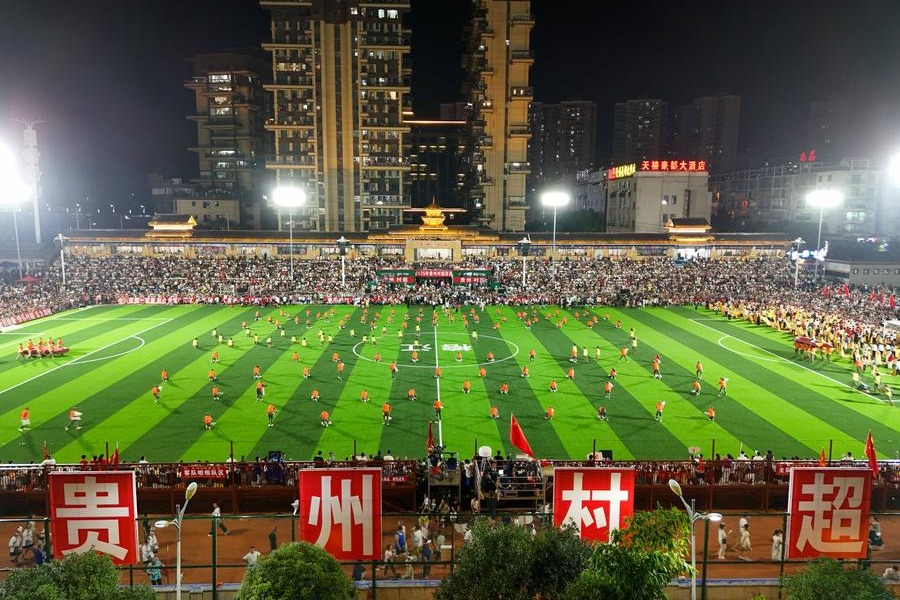Strength and ingenuity on display in single-industry towns

I was struck by two stories run in our business section recently on small-town industry in Lu'an, Anhui province, and Caoxian, Shandong province. Both are excellent examples of the concentration of rural enterprise in "industrial clusters". Lu'an has thousands of enterprises devoted to making wedding dresses. Around half the town's population of 54,000 is involved, and yearly output is over 3 billion yuan ($422 million). Caoxian makes 60-70 percent of all coffins used in funerals in Japan. The industry employs a quarter of the region's population of 1.3 million.
These towns are far from unusual. About 60 percent of all baijiu — China's signature liquor and the fuel of many late-night business meetings — is produced in Moutai town, Guizhou province. Huangqiao, Jiangsu province, produces 70 percent of China's violins and a jaw-dropping 50 percent of all violins sold globally. Hangji, also in Jiangsu, produces 30 percent of the world's toothbrushes. Yiwu in Zhejiang province produces 80 percent of the world's Christmas decorations.
Why has China's industrialization followed this pattern? According to social scientists, it is due to a combination of cultural heritage and circumstance.
Fei Xiaotong, one of the founding figures of Chinese sociology, saw the tightly knit village community as the fundamental building block of Chinese economic life. He visited Kaixiangong village in Jiangsu dozens of times throughout his career, producing detailed studies of its transformation. His research covered the full scope of modern Chinese history, beginning in the Republican period, moving through collectivization and State-driven industrialization and ending with economic liberalization following Deng Xiaoping's accession to power.
He chronicled the struggles of the village's inhabitants, who in the 1930s suffered under absentee landlords and a downturn in silk production caused by the destructive effects of imports from industrialized countries. He urged the protection and development of light industry in such rural areas as the best way to improve the living standards of the population, and after a brief period of ignominy during the political atmosphere of the 60s and 70s, emerged as a leading public intellectual and government official advocating the relaxation of market controls in the countryside.
The government was receptive to schemes for agricultural revival, and began to experiment with the creation of collectively owned enterprises in rural communes. These enterprises exploded in size and profitability, taking advantage of skilled but low-cost labor, local government backing and market niches for light consumer goods that had not existed in the era of central planning.
In the mid-90s, township enterprises were privatized as increased competition in the marketplace and changes in macroeconomic policy cut into their profitability. The formation of many of China's industrial clusters can be dated back to this time. The first violin factory in Huangqiao, for example, started out as a branch of a State-owned, Shanghai-based manufacturer, employing local farmers to make basic components. As the community gathered expertise, it split from its parent and in 1995 went into business alone, soon eclipsing its rivals and turning its eye toward the export market. Dozens of its managers, after leaving the company, started their own, and China's violin capital was born.
Township enterprises have been a major driver of China's rapid economic growth. However, their model may have been too successful in some ways. Fei's Kaixiangong is far wealthier than it was in the 30s. Its residents, thanks to a burgeoning textiles and weaving industry, now have access to all the amenities of modern life, like healthcare and education, TVs and refrigerators, cars and well-built homes. But with increased prosperity comes rising labor and material costs.
The government is aware of this, and has called for a restructuring of the rural economy, but township enterprises have always been bottom-up ventures, and it is up to local people to lead the way in adapting to new circumstances. The good news is that Chinese village communities have shown time and again their resilience and resourcefulness.

Today's Top News
- China's industrial profits down 1.8% in H1
- Thailand responds to Trump's ceasefire call
- Recall vote shows DPP's manipulation runs against Taiwan people's will: mainland spokesperson
- Top DPRK leader visits China-DPRK Friendship Tower
- China proposes global cooperation body on AI
- Scholars propose inclusive human rights framework






























